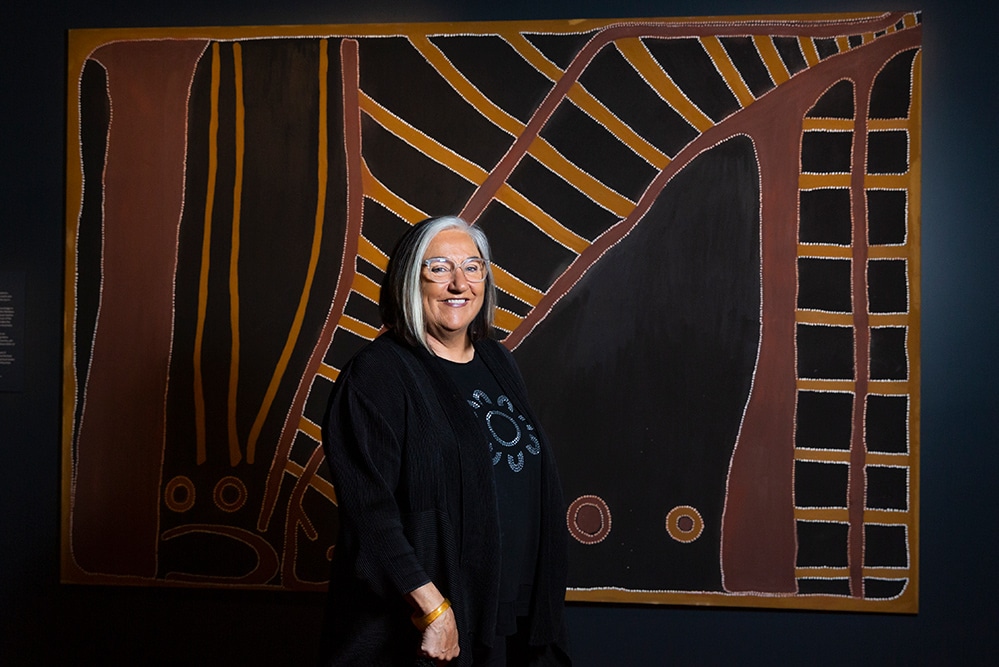The National Museum of Australia today unveiled the latest feather in their cap, a major $1.2-million artwork, Jabanunga aka Goorialla (The Rainbow Serpent), painted by late Kimberley artist, Rover Thomas.
Created in 1996, at the fledgling Warmun community art centre in Western Australia’s east Kimberley region, the monumental artwork by Thomas, is considered one of the artist’s most significant pieces.
The grand 2.7×1.8m artwork depicts the Rainbow Serpent penetrating the Earth, following a subterranean journey to the sea in the wake of Cyclone Tracy’s destruction of Darwin in 1974.
“It’s as epic in scale as it is in meaning,” Head of the Museum’s Indigenous Knowledges Curatorial Centre, Margo Ngawa Neale, said.
Painted at the peak of Thomas’ powers, Neale explained that the Rainbow Serpent is a hugely powerful being, producing amazing feats of both creation and destruction.
Jabanunga aka Goorialla (The Rainbow Serpent) speaks to the shared history between Indigenous and non-Indigenous Australians.
“At this point it was so incensed at all the colonisation, the destruction of land through cattle, the pastoralism through the mining, and deculturalisation of people, and as a result, in its wrath it brought on Cyclone Tracy,” Neale said.
“This painting is sort of a portend statement about what we today see as contemporary critical issues facing all of us, but this mob were onto it a long time ago,” she said.
Indigenous art ‘needs to tell the story’

The artwork was gifted to the National Museum by Michael Blanche in honour of his late wife Lauraine Diggins OAM, who passed away in 2019.
With more than 30 years working with Indigenous art across the gallery and museum space, Neale was instrumental in acquiring the piece. Well-connected and trusted in the sector, she has led a push for artworks like this to be donated to museums.
Historically, she said, artworks like Jabanunga aka Goorialla (The Rainbow Serpent) would have been donated to galleries, where their aesthetics are emphasised over other elements.
“To honour the original intention of Aboriginal artists, you need to tell the story,” Neale said, “and these stories are our history, they are our culture made visible.
“Over time, I’ve let people see that if you do it at a museum, not only are they more likely to be seen, because we don’t have huge collections,” she said, “and secondly, if they’re here they’ll have their stories told.
“Art galleries can just emphasise the aesthetics … you can do both here.”
Neale said presenting the story alongside the work only serves to enhance the aesthetic, rather than detract from it.
The work will be presented alongside seven other pieces from the National Historical Collection as part of a Masters’ Insight display in the Museum’s new Great Southern Land wing.
The exhibition showcases the extraordinary diversity of First Nations artists, with each piece created by masters from across the central-west and north of Australia.
Due to open to the public in autumn, Great Southern Land is currently being set up where the permanent collection was previously housed.
Canberra Daily would love to hear from you about a story idea in the Canberra and surrounding region. Click here to submit a news tip.



